Septic sickness. Understanding Sepsis: Causes, Symptoms, and Prevention Strategies
What is sepsis and how does it develop. How can you recognize the signs of sepsis. Who is at higher risk for developing sepsis. What should you do if you suspect sepsis. How does sepsis recovery progress. What are the long-term effects of sepsis.
Decoding Sepsis: A Life-Threatening Medical Emergency
Sepsis is a severe and potentially fatal condition that occurs when the body’s response to an infection spirals out of control. This extreme reaction can lead to widespread inflammation, organ failure, and death if not treated promptly. Understanding sepsis is crucial for early detection and improved outcomes.
How exactly does sepsis develop? The process begins with an initial infection, which can occur in various parts of the body such as the lungs, urinary tract, skin, or gastrointestinal system. As the infection progresses, the body’s immune system launches an aggressive response that can inadvertently damage its own tissues and organs.
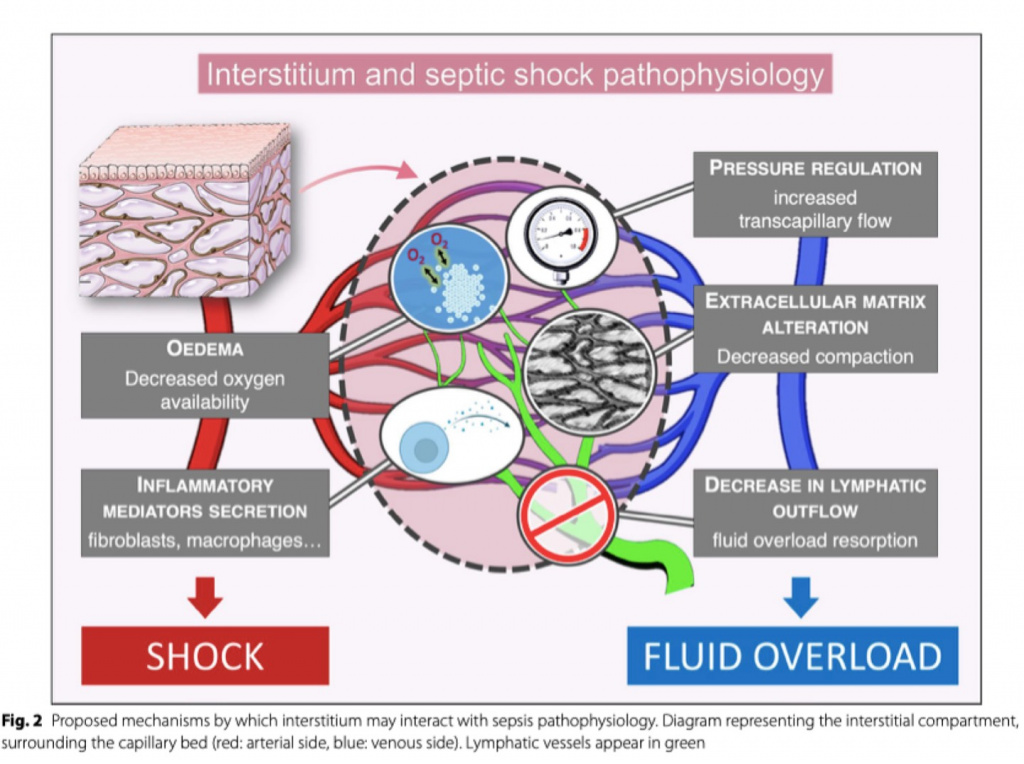
Key Facts About Sepsis
- At least 1.7 million adults in America develop sepsis annually
- Approximately 350,000 adults who develop sepsis die during hospitalization or are discharged to hospice
- 1 in 3 hospital deaths involve sepsis during the hospitalization
- In nearly 87% of cases, sepsis or the infection causing it starts before hospital admission
Identifying the Root Causes of Sepsis
While sepsis itself is not contagious, the infections that lead to it can often be transmitted from person to person. What are the primary culprits behind sepsis? Bacterial infections are the most common cause, but viral infections like COVID-19 and influenza, as well as fungal infections, can also trigger sepsis.
Is there a specific pathway that leads to sepsis? The process typically unfolds as follows:
- An infection enters the body
- The immune system responds to fight the infection
- The response becomes dysregulated and overactive
- Inflammation spreads throughout the body
- Organs and tissues begin to suffer damage
- Without prompt treatment, organ failure and death can occur
Recognizing the Warning Signs: Sepsis Symptoms and Red Flags
Early detection of sepsis is crucial for successful treatment. What symptoms should you be on the lookout for? The signs of sepsis can be subtle and may vary from person to person, but some common indicators include:

- High heart rate or weak pulse
- Confusion or disorientation
- Extreme pain or discomfort
- Fever, shivering, or feeling very cold
- Shortness of breath
- Clammy or sweaty skin
It’s important to note that a medical assessment by a healthcare professional is necessary to confirm sepsis. If you suspect sepsis in yourself or a loved one, seeking immediate medical attention is crucial.
Identifying High-Risk Groups: Who is Most Vulnerable to Sepsis?
While sepsis can affect anyone, certain groups are at a higher risk of developing this life-threatening condition. Understanding these risk factors can help individuals and caregivers remain vigilant.
High-Risk Groups for Sepsis
- Adults 65 or older
- People with weakened immune systems
- Individuals with chronic medical conditions (e.g., diabetes, lung disease, cancer, kidney disease)
- Those with recent severe illness or hospitalization
- Sepsis survivors
- Children younger than one year old
Why are these groups more susceptible to sepsis? Factors such as compromised immune function, underlying health conditions, and age-related vulnerabilities can make it more challenging for the body to fight off infections effectively, increasing the risk of sepsis development.
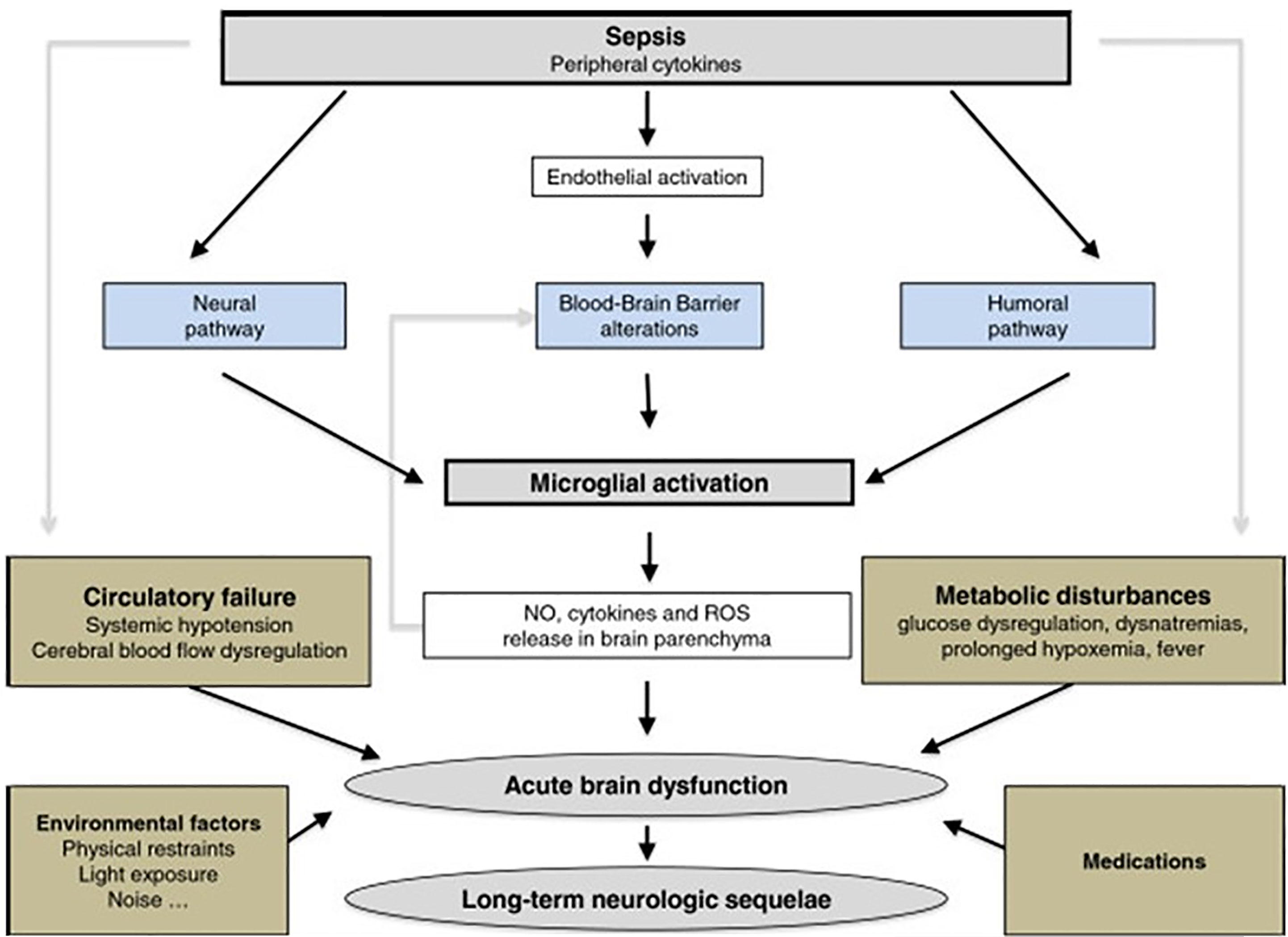
Taking Action: Steps to Follow When Sepsis is Suspected
Recognizing the urgency of sepsis is paramount. What should you do if you suspect sepsis in yourself or someone else? Here’s a step-by-step guide:
- Seek medical care immediately
- Ask your healthcare professional, “Could this infection be leading to sepsis?”
- Inquire if you should go to the emergency room
- In case of a medical emergency, call 911
- Inform the operator if you suspect sepsis or have COVID-19
- If possible, wear a mask before medical help arrives
Why is rapid action so crucial in cases of suspected sepsis? With prompt recognition and treatment, the chances of survival significantly increase. Treatment typically involves urgent medical care in an intensive care unit, careful monitoring of vital signs, and often the administration of antibiotics.
The Road to Recovery: Navigating Life After Sepsis
Surviving sepsis is a significant milestone, but the journey doesn’t end there. What does the recovery process entail for sepsis survivors? Rehabilitation usually begins in the hospital, focusing on gradually restoring mobility and self-care abilities.
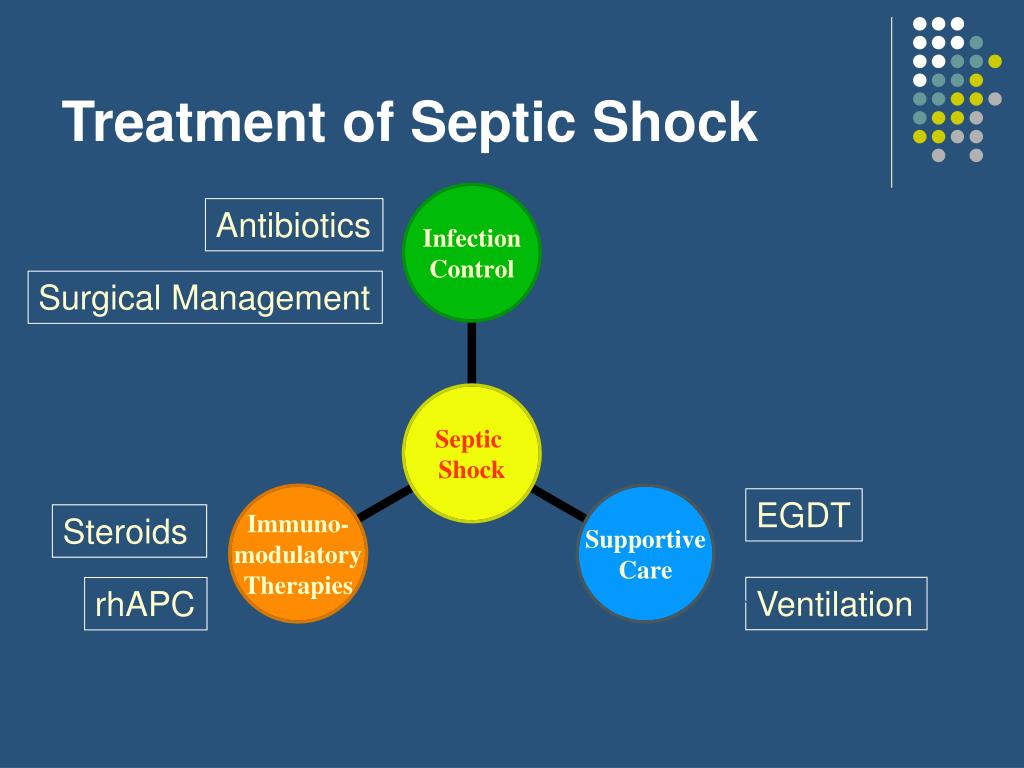
Key Aspects of Sepsis Recovery
- Slowly increasing physical activities
- Regaining independence in daily tasks
- Working with healthcare professionals to create an appropriate rehabilitation plan
- Building up activities gradually and resting when tired
What challenges might sepsis survivors face upon returning home? The recovery process can be complex, with both physical and emotional hurdles to overcome.
Common Post-Sepsis Symptoms
- Extreme weakness and fatigue
- Breathlessness
- General body pains or aches
- Difficulty moving around
- Sleep disturbances
- Weight loss and appetite changes
- Skin and nail problems
- Hair loss
Emotional and Cognitive Challenges
- Feelings of uncertainty and vulnerability
- Social withdrawal
- Flashbacks and traumatic memories
- Anxiety and depression
- Difficulty concentrating
- Frustration with limitations in daily activities
Long-Term Impact: Understanding Post-Sepsis Syndrome
For many sepsis survivors, the effects of their ordeal can extend well beyond the initial recovery period. What is Post-Sepsis Syndrome (PSS), and how does it affect survivors?

Post-Sepsis Syndrome refers to the physical and psychological long-term effects experienced by some sepsis survivors. These effects can persist for months or even years after the initial illness.
Common Symptoms of Post-Sepsis Syndrome
- Recurring infections
- Chronic fatigue and poor mobility
- Muscle and joint pain
- Insomnia and nightmares
- Cognitive impairments (e.g., memory issues, difficulty concentrating)
- Anxiety, depression, and PTSD
- Organ dysfunction
How can sepsis survivors manage PSS and improve their quality of life? A multidisciplinary approach is often necessary, involving:
- Regular follow-ups with healthcare providers
- Physical therapy and rehabilitation
- Psychological support and counseling
- Lifestyle modifications (e.g., balanced diet, gentle exercise)
- Joining support groups for sepsis survivors
Preventing Sepsis: Strategies for Reducing Risk
While it’s not always possible to prevent sepsis, there are steps individuals can take to reduce their risk. What are some effective strategies for sepsis prevention?

Key Prevention Strategies
- Practicing good hygiene (e.g., regular handwashing)
- Keeping wounds clean and covered
- Staying up to date with vaccinations
- Managing chronic health conditions effectively
- Seeking prompt medical attention for infections
- Being aware of sepsis symptoms and risk factors
Why is vaccination an important aspect of sepsis prevention? Vaccines can help prevent certain infections that may lead to sepsis, such as pneumococcal pneumonia, influenza, and COVID-19. For individuals in high-risk groups, discussing additional vaccination options with a healthcare provider is advisable.
Sepsis Awareness: The Importance of Education and Advocacy
Raising awareness about sepsis is crucial for improving outcomes and saving lives. How can individuals and communities contribute to sepsis awareness?
Strategies for Promoting Sepsis Awareness
- Sharing information about sepsis symptoms and risk factors
- Participating in sepsis awareness campaigns
- Supporting sepsis research and advocacy organizations
- Encouraging healthcare providers to prioritize sepsis education
- Sharing personal stories of sepsis survival or loss
Why is community involvement so important in the fight against sepsis? By increasing public knowledge about sepsis, we can empower individuals to recognize the signs early, seek prompt medical attention, and potentially save lives.

As we continue to learn more about sepsis and its long-term effects, ongoing research and education remain vital. By staying informed and vigilant, we can work together to reduce the impact of this life-threatening condition and improve outcomes for those affected by sepsis.
What is Sepsis? | Sepsis
- What is sepsis?
- Is sepsis contagious?
- What causes sepsis?
- Who is at risk?
- What are the signs & symptoms?
- What should I do if I think I might have sepsis?
- Fact Sheet, Brochure, and Conversation Starter
Anyone can get an infection, and almost any infection, including COVID-19, can lead to sepsis. In a typical year:
- At least 1.7 million adults in America develop sepsis.
- At least 350,000 adults who develop sepsis die during their hospitalization or are discharged to hospice.
- 1 in 3 people who dies in a hospital had sepsis during that hospitalization
- Sepsis, or the infection causing sepsis, starts before a patient goes to the hospital in nearly 87% of cases.
Sepsis is the body’s extreme response to an infection. It is a life-threatening medical emergency. Sepsis happens when an infection you already have triggers a chain reaction throughout your body. Infections that lead to sepsis most often start in the lung, urinary tract, skin, or gastrointestinal tract. Without timely treatment, sepsis can rapidly lead to tissue damage, organ failure, and death.
Sepsis happens when an infection you already have triggers a chain reaction throughout your body. Infections that lead to sepsis most often start in the lung, urinary tract, skin, or gastrointestinal tract. Without timely treatment, sepsis can rapidly lead to tissue damage, organ failure, and death.
Is sepsis contagious?
You can’t spread sepsis to other people. However, an infection can lead to sepsis, and you can spread some infections to other people.
Sepsis happens when…
Transcript: Sepsis happens when [TXT 1 1 KB]
What causes sepsis?
Infections can put you or your loved one at risk for sepsis. When germs get into a person’s body, they can cause an infection. If you don’t stop that infection, it can cause sepsis. Bacterial infections cause most cases of sepsis. Sepsis can also be a result of other infections, including viral infections, such as COVID-19 or influenza, or fungal infections.
Top of Page
Who is at risk?
Anyone can develop sepsis, but some people are at higher risk for sepsis:
Adults 65 or older
People with weakened immune systems
People with chronic medical conditions, such as diabetes, lung disease, cancer, and kidney disease
People with recent severe illness or hospitalization
People who survived sepsis
Children younger than one
Top of Page
What are the signs & symptoms?
A person with sepsis might have one or more of the following signs or symptoms:
High heart rate or weak pulse
Confusion or disorientation
Extreme pain or discomfort
Fever, shivering, or feeling very cold
Shortness of breath
Clammy or sweaty skin
A medical assessment by a healthcare professional is needed to confirm sepsis.
Top of Page
What should I do if I think I might have sepsis?
Sepsis is a medical emergency. If you or your loved one has an infection that’s not getting better or is getting worse, ACT FAST.
Get medical care IMMEDIATELY. Ask your healthcare professional, “Could this infection be leading to sepsis?” and if you should go to the emergency room.
If you have a medical emergency, call 911. If you have or think you have sepsis, tell the operator. If you have or think you have COVID-19, tell the operator this as well. If possible, put on a mask before medical help arrives.
With fast recognition and treatment, most people survive. Treatment requires urgent medical care, usually in an intensive care unit in a hospital, and includes careful monitoring of vital signs and often antibiotics.
Top of Page
Fact Sheet, Brochure, and Conversation Starter (Print Only)
Protect Yourself and Your Family from Sepsis [PDF – 2 pages]
It’s Time to Talk about Sepsis [PDF – 2 pages]
Start the Conversation Today [PDF – 2 Pages]
Top of Page
I Survived Sepsis.
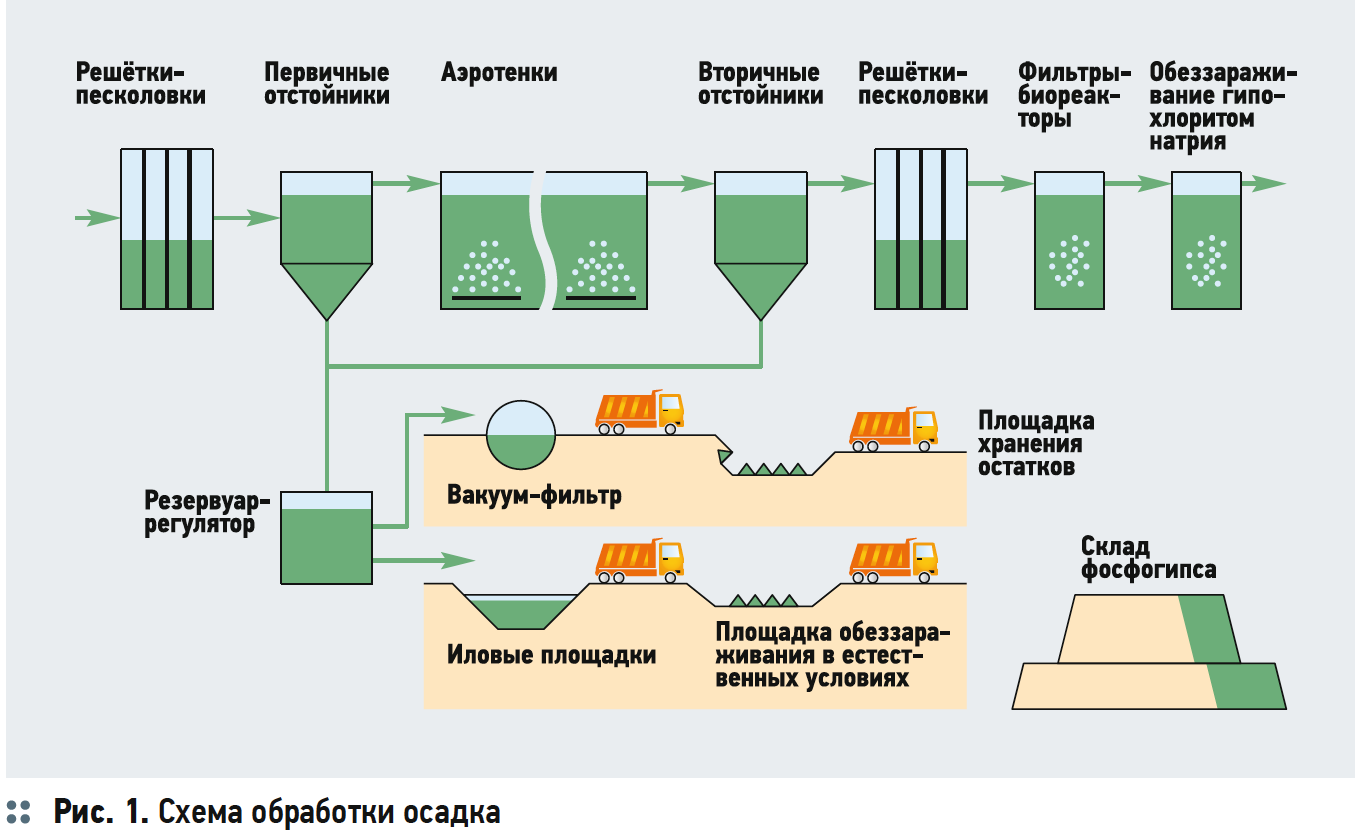 What’s Next? | Sepsis
What’s Next? | Sepsis
What are the first steps in recovery?
After you have had sepsis, rehabilitation usually starts in the hospital by slowly helping you to move around and look after yourself: bathing, sitting up, standing, walking, taking yourself to the restroom, etc. The purpose of rehabilitation is to restore you back to your previous level of health or as close to it as possible. Work with your healthcare professional to determine the most appropriate rehabilitation plan and what activities are safe for you. Begin your rehabilitation by building up your activities slowly, and rest when you are tired.
How will I feel when I get home?
You have been seriously ill, and your body and mind need time to get better. You may experience the following physical symptoms upon returning home:
- General to extreme weakness and fatigue
- Breathlessness
- General body pains or aches
- Difficulty moving around
- Difficulty sleeping
- Weight loss, lack of appetite, food not tasting normal
- Dry and itchy skin that may peel
- Brittle nails
- Hair loss
You may also experience the following feelings once you’re at home:
- Unsure of yourself
- Not caring about your appearance
- Wanting to be alone, avoiding friends and family
- Flashbacks, bad memories
- Confusing reality (e.
 g, not sure what is real and what isn’t)
g, not sure what is real and what isn’t) - Feeling anxious, more worried than usual
- Poor concentration
- Depressed, angry, unmotivated
- Frustration at not being able to do everyday tasks
- What are the first steps in recovery?
- How will I feel when I get home?
- What can I do to recover at home?
- Are there any long-term effects of sepsis?
- Do the effects of sepsis get better? Am I at risk for sepsis again? What should I do if I think I have sepsis again?
What sepsis survivors need to know (Print Only) [PDF – 2 pages]
Talk with your healthcare professional if you or your caregivers are concerned about any physical symptoms or feelings you are experiencing.
Top of Page
What can I do to recover at home?
Work with your healthcare professional to determine the most appropriate rehabilitation plan and what activities are safe for you. Some examples may include:
- Set small, achievable goals for yourself each week, such as taking a bath, dressing yourself, or walking up the stairs
- Rest and rebuild your strength
- Talk about what you are feeling to family and friends
- Record your thoughts, struggles, and milestones in a journal
- Learn about sepsis to understand what happened
- Ask your family to fill in any gaps you may have in your memory about what happened to you
- Eat a balanced diet
- Exercise if you feel up to it
- Make a list of questions to ask your healthcare professional when you go for a check up
Top of Page
Are there any long-term effects of sepsis?
Many people who survive sepsis recover completely and their lives return to normal. However, as with some other illnesses requiring intensive medical care, some patients have long-term effects. These problems may not become apparent until several weeks after your hospital stay and may include such consequences as:
However, as with some other illnesses requiring intensive medical care, some patients have long-term effects. These problems may not become apparent until several weeks after your hospital stay and may include such consequences as:
- Insomnia, difficulty getting to or staying asleep
- Nightmares, vivid hallucinations, panic attacks
- Disabling muscle and joint pains
- Decreased mental (cognitive) function
- Loss of self-esteem and self-belief
- Organ dysfunction (kidney failure, lung problems, etc.)
- Amputations (loss of limb(s)
Talk with your healthcare professional if you have concerns about what you might experience in the weeks and months after getting home from the hospital.
Top of Page
Do the effects of sepsis get better? Am I at risk for sepsis again? What should I do if I think I have sepsis again?
Generally, the effects of sepsis do improve with time. Some hospitals have follow-up clinics or staff to help patients and families once they have been discharged. Find out if yours does or if there are local resources available to help you while you get better. However, if you feel you are not getting better or finding it difficult to cope, call your healthcare professional.
Find out if yours does or if there are local resources available to help you while you get better. However, if you feel you are not getting better or finding it difficult to cope, call your healthcare professional.
Keep in mind that people who survived sepsis are at higher risk for getting sepsis again. If you or your loved one has an infection that’s not getting better or is getting worse, ACT FAST. Get medical care IMMEDIATELY. Ask your healthcare professional, “Could this infection be leading to sepsis?” and if you should go to the emergency room. With fast recognition and treatment, most people survive.
Top of Page
Page last reviewed: August 9, 2022
Content source: Centers for Disease Control and Prevention, National Center for Emerging and Zoonotic Infectious Diseases (NCEZID), Division of Healthcare Quality Promotion (DHQP)
To receive email updates about this page, enter your email address:
Related Links
Antibiotic/ Antimicrobial Resistance
Antibiotic Prescribing and Use in Hospitals and Long-Term care
Healthcare-Associated Infections
Methicillin-resistant Staphylococcus aureus (MRSA) Infections
Preventing Infections in Cancer Patients
Sepsis
Sepsis
- Health Issues »
- A
- B
- C
- D
- D
- E
- Y
- W
- W
- I
- R
- L
- M
- H
- O
- P
- R
- S
- T
- U
- F
- X
- C
- H 900 05
- W
- W
- L
- S
- B
- E
- S
- I
- Popular Topics
- Air pollution
- Coronavirus disease (COVID-19)
- Hepatitis
- Data and statistics »
- News bulletin
- The facts are clear
- Publications
- Find Country »
- A
- B
- C
- D
- L
- E
- Y
- W
- W
- I
- Y
- K
- L 90 005
- M
- H
- O
- R
- R
- C
- T
- Y
- F
- X
- C
- H
- W
- W
- L
- Y
- b
- e
- i
- i
- WHO in countries »
- Reporting
- Regions »
- Africa
- America
- Southeast Asia
- Europe
- Eastern Mediterranean
- Western Pacific
- Media Center
- Press releases
- Statements
- Media messages
- Comments
- Reporting
- Online Q&A
- Events
- Photo reports
- Case Studies
- Questions and answers
- Speeches
- Update
- Emergencies ”
- News ”
- Disease Outbreak News
- WHO Data »
- Dashboards »
- COVID-19 Monitoring Dashboard
- Basic moments ”
- About WHO »
- CEO
- About WHO
- WHO activities
- Where does WHO work?
- Governing Bodies »
- World Health Assembly
- Executive committee
- Main page/
- Media Center /
- Newsletters/
- Read more/
- Sepsis
©
Photo
Key Facts
- Sepsis occurs when the body’s response to an infection causes damage to its own tissues and organs, and can lead to death or serious deterioration.

- The global epidemiological burden of sepsis cannot be accurately estimated. It is estimated that it develops in more than 30 million people each year and possibly kills 6 million people(1). The problem of sepsis is likely to be most prevalent in low- and middle-income countries.
- An estimated 3 million newborns and 1.2 million children suffer from sepsis each year (2). Three out of ten deaths due to neonatal sepsis are suspected to be due to drug-resistant pathogens.
- One in ten deaths due to pregnancy and childbirth are due to maternal sepsis, with 95% of maternal sepsis deaths occurring in low- and middle-income countries (4). Each year, one million newborns die due to maternal infections, in particular maternal sepsis (5).
- Sepsis may be a clinical manifestation of infections acquired both outside and inside healthcare facilities. Healthcare-associated infection is one of the most common, if not the most common, type of adverse events occurring in the course of healthcare, affecting millions of patients worldwide each year (6).
 Because these infections are often resistant to antibiotics, they can cause rapid clinical deterioration.
Because these infections are often resistant to antibiotics, they can cause rapid clinical deterioration.
General information
Sepsis is a life-threatening organ dysfunction caused by dysregulation of the body’s response to infection (7). If sepsis is not recognized early and treated promptly, it can cause septic shock, multiple organ failure, and death. Sepsis can be caused by any type of infectious pathogen. Antimicrobial resistance is a leading factor in the lack of clinical response to treatment and the rapid development of sepsis and septic shock. Among patients with sepsis caused by drug-resistant pathogens, there is an increased risk of hospital mortality.
Who is at risk?
Anyone with an infection can develop sepsis, but vulnerable populations such as the elderly, pregnant women, newborns, hospitalized patients, and those with HIV/AIDS, cirrhosis, cancer, kidney disease, autoimmune disease, and spleen (8).
Signs and symptoms
Sepsis is an emergency. However, the signs and symptoms of sepsis in patients may be different at different points in time, since such a clinical condition as sepsis can be caused by many pathogens and change its character at different stages. Warning signs and symptoms include a rise or fall in body temperature and chills, changes in mental status, shortness/rapid breathing, rapid heartbeat, weak pulse/low blood pressure, oliguria, blue or marbling of the skin, cold extremities, and severe pain or discomfort in the body ( 9-eleven). Suspicion of sepsis is the first step towards its early recognition and diagnosis.
However, the signs and symptoms of sepsis in patients may be different at different points in time, since such a clinical condition as sepsis can be caused by many pathogens and change its character at different stages. Warning signs and symptoms include a rise or fall in body temperature and chills, changes in mental status, shortness/rapid breathing, rapid heartbeat, weak pulse/low blood pressure, oliguria, blue or marbling of the skin, cold extremities, and severe pain or discomfort in the body ( 9-eleven). Suspicion of sepsis is the first step towards its early recognition and diagnosis.
Prevention
There are two main ways to prevent sepsis:
1. Prevention of microbial transmission and infection;
2. Prevention of complications of infection to the state of sepsis.
Infection prevention in the community includes good hygiene practices such as handwashing and safe food preparation, improving the quality and availability of water and sanitation, ensuring access to vaccines, especially for those at high risk of developing sepsis, and proper nutrition including breastfeeding newborns.
Prevention of nosocomial infections is generally ensured by having functioning infection prevention and control programs and appropriate teams of staff, good hygiene practices, including hand hygiene, along with cleanliness of the premises and proper operation of equipment.
Prevention of sepsis in both the community and in health care settings involves appropriate antibiotic treatment of infections, including regular assessment of patients for the rational use of antibiotics, prompt medical attention, and early detection of signs and symptoms of sepsis.
The effectiveness of infection prevention is clearly supported by scientific evidence. For example, with strict hand hygiene practices in health care settings, infections can be reduced by up to 50% (12), and in public places, these interventions can reduce the risk of diarrhea by at least 40% (13). Measures to improve water supply, sanitation and hygiene (WASH) can reduce the overall burden of disease worldwide by 10% 14 . Every year, vaccinations help prevent 2–3 million infection-related deaths (15).
Every year, vaccinations help prevent 2–3 million infection-related deaths (15).
Diagnosis and clinical management
In order to detect sepsis early and manage it appropriately in a timely manner, it is essential to recognize and not ignore the signs and symptoms listed above, and to identify certain biomarkers (particularly procalcitonin). Post-early detection, diagnostic procedures are important to help identify the causative agent of the infection that caused sepsis, since this determines the choice of targeted antimicrobial treatment. Antimicrobial resistance (AMR) can hinder the clinical management of sepsis, as it often requires empirical antibiotic selection. Therefore, it is necessary to understand the epidemiological parameters of the spread of AMR in these settings. Once the source of the infection has been identified, the most important task is to eliminate it, for example, by draining the abscess.
Fluid therapy is also important in the early management of sepsis to normalize circulating fluid volume. In addition, vasoconstrictor drugs may be required to improve and maintain tissue perfusion. Further measures for the correct management of sepsis are selected based on the data of repeated examinations and diagnostic measures, including monitoring of the patient’s vital signs.
In addition, vasoconstrictor drugs may be required to improve and maintain tissue perfusion. Further measures for the correct management of sepsis are selected based on the data of repeated examinations and diagnostic measures, including monitoring of the patient’s vital signs.
Sepsis and the Sustainable Development Goals
Sepsis is a major cause of maternal death, as well as death of newborns and children under five years of age. For this reason, the control of sepsis will clearly contribute to the achievement of targets 3.1 and 3.2 of the Sustainable Development Goals (SDGs).
Sepsis is a highly relevant cause of maternal death, as well as death of newborns and children under five years of age. For this reason, the control of sepsis will clearly contribute to the achievement of targets 3.1 and 3.2 of the Sustainable Development Goals (SDGs).
The indicators for achieving these two SDG targets are maternal, newborn and under-five mortality rates. Sepsis occupies an important place among the causes of these preventable deaths. It is often the clinical condition that ultimately causes death in patients with HIV, tuberculosis, malaria and other infectious diseases mentioned in task 3.3, but it is usually not recorded as a cause of death in such patients and is not is included in the statistics on the indicators of the achievement of SDG target 3.3.
It is often the clinical condition that ultimately causes death in patients with HIV, tuberculosis, malaria and other infectious diseases mentioned in task 3.3, but it is usually not recorded as a cause of death in such patients and is not is included in the statistics on the indicators of the achievement of SDG target 3.3.
Sepsis is also important, though more indirectly, to other health-related targets under SDG 3. For example, prevention and/or proper diagnosis and management of sepsis is also relevant to adequate vaccine coverage, universal coverage of quality health services, compliance with the International Health Regulations, preparedness and provision of water and sanitation services. However, achieving universal prevention, diagnosis and management of sepsis remains a challenge.
WHO activities
In May 2017, the Seventieth World Health Assembly, based on a report by the WHO Secretariat, adopted a resolution on sepsis.
Resolution WHA70.7. Improving the prevention, diagnosis and clinical management of sepsis
Report of the WHO Secretariat A70/13. Improving the prevention, diagnosis and clinical management of sepsis
Improving the prevention, diagnosis and clinical management of sepsis
Several WHO headquarters-level programmes, in collaboration and coordination with WHO regional offices, are currently studying the public health impact of sepsis and providing guidance and support at country level on prevention, early and correct diagnosis, as well as timely and effective clinical management of sepsis in the interests of a comprehensive solution to this problem. The Global Infection Prevention and Control Team, located at WHO Headquarters in the Department of Service Delivery and Safety, coordinates sepsis activities and leads prevention efforts.
Bibliography
(1) Fleischmann C, Scherag A, Adhikari NK, et al. Assessment of Global Incidence and Mortality of Hospital-treated Sepsis. Current Estimates and Limitations. Am J Respir Crit Care Med 2016; 193(3): 259-72.
(2) Fleischmann-Struzek C, Goldfarb DM, Schlattmann P, Schlapbach LJ, Reinhart K, Kissoon N. The global burden of pediatric and neonatal sepsis: a systematic review. The Lancet Respiratory medicine 2018; 6(3): 223-30.
The global burden of pediatric and neonatal sepsis: a systematic review. The Lancet Respiratory medicine 2018; 6(3): 223-30.
(3) Laxminarayan R, Matsoso P, Pant S, et al. Access to effective antimicrobials: a worldwide challenge. Lancet 2016; 387(10014): 168-75.
(4) Say L, Chou D, Gemmill A, et al. Global causes of maternal death: a WHO systematic analysis. The Lancet Global Health 2014; 2(6): e323-33.
(5) Reproductive, Maternal, Newborn, and Child Health: Disease Control Priorities, Third Edition (Volume 2). In: Black RE, Laxminarayan R, Temmerman M, Walker N, eds. Reproductive, Maternal, Newborn, and Child Health: Disease Control Priorities, Third Edition (Volume 2). Washington (DC): The International Bank for Reconstruction and Development / The World Bank(c) 2016 International Bank for Reconstruction and Development / The World Bank.; 2016.
(6) World Health Organization. WHO Report on the burden of endemic health care-associated infection worldwide. 2017-11-21 15:11:22 2011.
2017-11-21 15:11:22 2011.
http://apps.who.int/iris/bitstream/handle/10665/80135/9789241501507_eng.pdf?sequence=1 (accessed April 10 2018).
(7) Singer M, Deutschman CS, Seymour CW, et al. The Third International Consensus Definitions for Sepsis and Septic Shock (Sepsis-3). JAMA 2016; 315(8): 801-10.
(8) Gotts JE, Matthay MA. Sepsis: pathophysiology and clinical management. British Medical Journal 2016.
(9) United States Centers for Disease Control and Prevention. Healthcare Professional (HCP) Resources : Sepsis. 2018-02-01T06:23:15Z.
https://www.cdc.gov/sepsis/get-ahead-of-sepsis/hcp-resources.html (accessed April 10 2018).
(10) Global Sepsis Alliance. Toolkits. https://www.world-sepsis-day.org/toolkits/ (accessed April 10 2018).
(11) UK SepsisTrust. education. 2018. https://sepsistrust.org/education/ (accessed April 10 2018).
(12) Luangasanatip N, Hongsuwan M, Limmathurotsakul D, et al. Comparative efficacy of interventions to promote hand hygiene in hospital: systematic review and network meta-analysis. british medical journal. 2015;351:h4728.
Comparative efficacy of interventions to promote hand hygiene in hospital: systematic review and network meta-analysis. british medical journal. 2015;351:h4728.
(13) UNICEF. UNICEF Data : Monitoring the Situation of Children and Women – Diarrhoeal Disease. https://data.unicef.org/topic/child-health/diarrhoeal-disease/ (accessed April 10 2018).
(14) Pruss-Ustun A, Bartram J, Clasen T, et al. Burden of disease from inadequate water, sanitation and hygiene in low- and middle-income settings: a retrospective analysis of data from 145 countries. Tropical medicine & international health : TM & IH 2014; 19(8): 894-905.
(15) World Health Organization. Fact sheet: Immunization coverage. 2018-04-10 14:55:37.
African swine fever, an infectious septic disease of domestic pigs and wild boars
The main clinical signs of ASF, which can be used to establish the disease: fever (body temperature rises to 41 – 42 ° C, with a period of 3 to 7 calendar days), depression, hemodynamic disturbance – cyanosis (blue) or hyperemia (redness) of the skin of the ears , abdomen, perineum and tail, inflammatory and necrodystrophic changes in parenchymal organs. ASF is accompanied by diarrhea, bloody discharge from the nasal cavity, clonic convulsions, and abortion in pregnant sows. Surviving animals remain virus carriers for life.
ASF is accompanied by diarrhea, bloody discharge from the nasal cavity, clonic convulsions, and abortion in pregnant sows. Surviving animals remain virus carriers for life.
The causative agent of ASF is a DNA-containing virus of the genus Asfivirus of the family Asfarviridae. The pathogen is stable in the external environment, in the soil the pathogen remains viable for 120 calendar days, in standing water – 175 calendar days, in manure – up to 160 calendar days, in muscle tissue, bone marrow – up to 180 calendar days, in the spleen – up to 1 of the year. The pathogen is sensitive to disinfectants, surfactants and detergents; it dies during heat treatment at a temperature of at least 70 ° C for at least 30 minutes.
Incubation period – lasts from the moment of infection until the onset of clinical signs of ASF (generally, it ranges from 3 to 15 calendar days)
The source of the pathogen is: sick, as well as recovered, in the incubation period, without clinical signs and releasing the pathogen into the external environment of pigs and wild boars.
The transmission of the pathogen is carried out by alimentary (with food, through dirty hands, household items), contact, iatrogenic (with clinical manifestations), aerogenic (through the mucous membrane of the respiratory tract), transmissible (through blood-sucking insects), intrauterine routes and with genetic material. Transmission factors of the pathogen are secrets and excretions (sweat, urine) of sick pigs, wild boars and virus carriers, products of slaughter of pigs, wild boars and products of their processing, corpses of pigs and wild boars, as well as environmental objects contaminated with the pathogen, including feed, water , manure, bedding, soil, clothing and footwear for service personnel, inventory, equipment, transport and other material and technical means.
Treatment methods and appropriate vaccines have not been developed.
The basics of ASF disease prevention are:
1. Regular clinical examination of pigs. Monitoring laboratory tests of blood serum.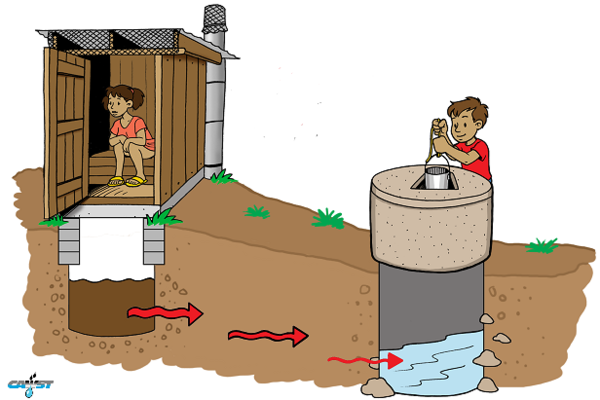

 g, not sure what is real and what isn’t)
g, not sure what is real and what isn’t)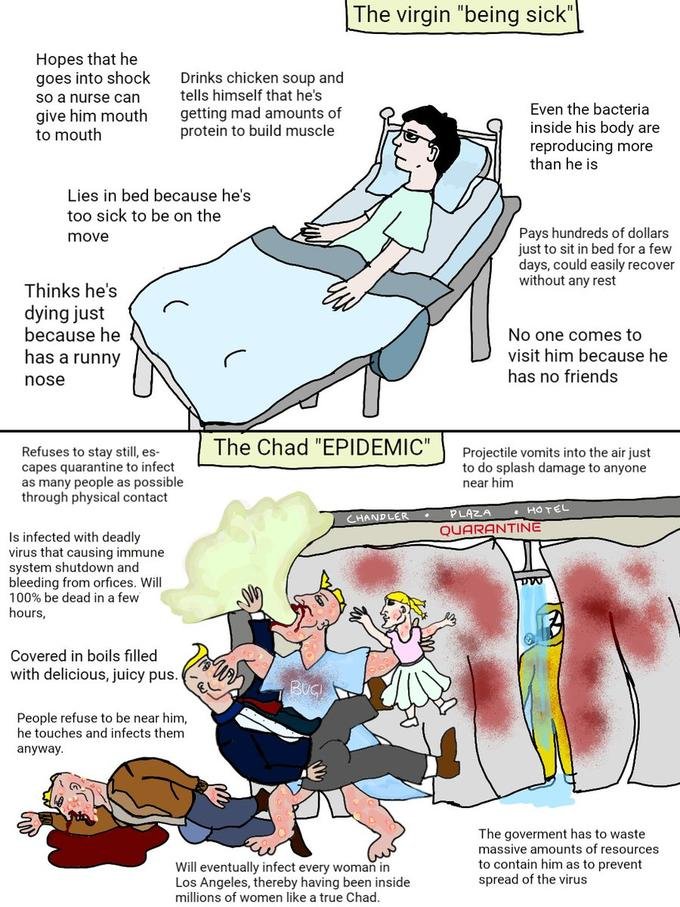
 Because these infections are often resistant to antibiotics, they can cause rapid clinical deterioration.
Because these infections are often resistant to antibiotics, they can cause rapid clinical deterioration.